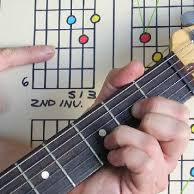How To Remember Chord Shapes For Guitar 23/02/2023 - 1556 views

Practice consistently: The more you practice chord shapes, the more familiar they will become. Practice playing chords regularly to help commit the shapes to muscle memory.
Use visualization: Try visualizing the chord shapes in your mind before playing them. This can help you memorize the shape and where your fingers need to go.
Break it down: Instead of trying to memorize the entire chord shape at once, break it down into smaller sections. For example, focus on memorizing the finger placement for the first two or three notes before adding the rest.
Use mnemonics: Mnemonics are memory aids that help you remember things. Create a mnemonic to help you remember the finger placement for a particular chord shape.
Associate chords with songs: Try associating a particular chord shape with a song you know well. This can help you remember the shape and make it more fun to practice.
Practice with a metronome: Practicing chords with a metronome can help you develop muscle memory and timing, which can make it easier to remember chord shapes.
Practice with a chord chart: Use a chord chart to help you visualize the chord shapes and see how they relate to each other. This can help you understand the patterns and make it easier to remember the shapes.
Remember that memorizing chord shapes takes time and practice. Be patient and persistent, and don't get discouraged if it takes some time to commit the shapes to memory. With consistent practice and these tips, you'll be able to remember chord shapes in no time.
More Articles »

